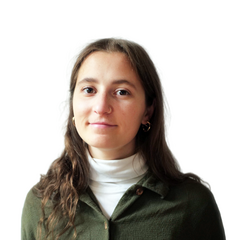100.000th Holocaust memorial Stolperstein laid in Germany
Already stretching far and wide across the world, Gunter Demnig, the founder of Germany’s Stolperstein project to remember victims of the Nazi regime, has laid the 100.000th stumbling stone in a town in Bavaria.
Gunter Demnig lays milestone Stolperstein in Feuchtwangen
Germany’s streets are punctuated by a unique and ubiquitous memorial for those targeted by the National Socialist regime - and anyone who has lived in or visited the country has likely stumbled upon more Stolpersteine than they can count. Now, in a milestone for the project, founder Gunter Demnig laid the 100.000th plaque in Feuchtwangen, near Nuremberg, last week. Eight members of the Jewish Gutmann family were remembered in the ceremony.
Demnig laid the first stone in Cologne back in 1992 and has previously dubbed his project the “world’s largest decentralised artwork”. Each stone is just 10 by 10 centimetres, a cube made of golden brass which is most commonly laid before the last voluntary residence of victims of the Nazi regime.
US Ambassador’s family commemorated in Stolperstein ceremony
The production and installation of one of Demnig’s Stolpersteine costs around 130 euros, and anyone in the world can pay to have a stone installed to memorialise a victim. The stones have also been installed in the Netherlands, the UK, Belgium and France.
On the occasion of the 100.000th stone being laid, it was the family of US Ambassador to Germany Amy Gutmann, who was being commemorated at the ceremony outside the house in Feuchtwangen where Gutmann’s father grew up.
He was Kurt Gutmann, a 23-year-old student when he fled Feuchtwangen for India in 1934 with his parents and five other relatives. He later emigrated the the US, where his now-ambassador daughter was born in 1949.
Outside the house in Feuchtwangen now lie eight stones which use the same carefully chosen words engraved on almost every existing Stolperstein. At the top, the stones read Hier wohnte ("here lived"), followed by the name of the victim and their birth date. This is followed by the date the victim was arrested or deported, sometimes an exact date, sometimes only a year, and where they were held prisoner.
On most Stolpersteine, the last line reads one of three words: ermordet ("murdered"), befreit ("liberated"), or überlebt ("survived"). Unlike many other families all of the Gutmann’s - Kurt, Max, Abraham, Ernst, Manfred, Amalie and their extended family, Adele and Julius Löwenstein - managed to escape the Nazis alive.
Speaking at the laying ceremony, Gutmann said, “As the US ambassador, the daughter of Kurt Gutmann, a Jewish refugee from Feuchtwangen, I feel like we have come full circle from trauma to tribute.”
Thumb image credit: CaterinaPuhali / Shutterstock.com
By clicking subscribe, you agree that we may process your information in accordance with our privacy policy. For more information, please visit this page.



COMMENTS
Leave a comment